
© Gene Schiavone. (Click image for larger version)
American Ballet Theatre
Giselle
New York, Metropolitan Opera House
23 May 2015
www.abt.org
To the Manner Born
In a way it was hardly a surprise. On May 23, when Stella Abrera, a soloist with American Ballet Theatre since 2001, danced her first Giselle with the company, it was as if she had been dancing it all her life. No opening-night jitters, no doubts, no bumps along the road. Abrera’s Giselle was calm, limpid, unmannered and un-forced. From the moment she rushed through the door of her mother’s alpine cottage to her final retreat into the grave, Abrera exuded a touching (but not cloying) sweetness and unaffected sincerity. And a sense of proportion and taste, something that can be lost in star performances straining for this or that memorable effect. Abrera danced the text simply, naturally.
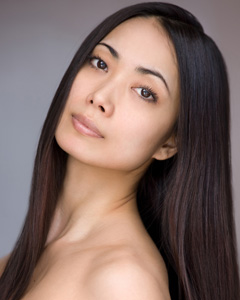
© Jade Young. (Click image for larger version)
Perhaps in deference to the particular nature of the evening, Shklyarov took his cue from Abrera, giving a warm, spontaneous, and disarming performance. Some dancers play the philandering Albrecht as a cad; not Shklyarov, at least not on this night. The naturally boyish, slight dancer approached Abrera with curiosity, glee, as a young man fleeing from the rules and rigidity of his social milieu. He didn’t overplay the mime; there was no grabbing at the absent sword with an exaggerated gesture or emphatic counting of the flower petals in the “he loves me, he loves me not” scene. Instead, he revealed his character in subtle ways. He stiffened at the sight of Bathilde, the noblewoman he was bound to marry, clearly showing that this was a marriage of convenience, not love. His wide-eyed shame at the disaster wrought by his actions was far more affecting than the wild desperation exhibited by many male dancers in this scene.
Abrera and Shklyarov had a sweet, loving rapport; I was especially struck by a warm embrace toward the beginning of the second act, in which Abrera placed her head on his chest – I’d never noticed this moment before. In the final moments of the ballet, when she slipped from his grasp, he brought his hand to his cheek, as if he could still feel the warmth of her hand there. Abrera’s transformation into a ghost was gradual; warmth and love lingered in her movements and gaze. And yet the illusion of weightlessness and otherworldliness was achieved, mainly through the lightness of the coordination between the two partners. At times he seemed to disappear behind her, allowing her to float all the more freely.
Abrera, who at one time in her career suffered a debilitating injury, seemed at ease with the technical challenges: the fishtail jumps, the long series of entrechats and hops, the wild spins in attitude, the slow, unforgiving forward-leaning arabesques in profile. Like her acting, her dancing is pristine, elegant, and unforced. Shklyarov’s dancing, too, seems to flow naturally. He launched into gorgeous, tight double air spins that land in neat fifth positions; his airy jetés traced soft, buoyant arcs through the air. He polished off one of the cleanest, most fluid series of entrechats six (legs crossing in the air repeatedly) I’ve ever seen, traveling backward, arms slowly rising until he appeared to be almost floating. (There were more than thirty of them, but I lost count along the way.) They were executed calmly, almost as if the movement came from an external impulse. He played the second act calmly, like a man on the brink of exhaustion, almost accepting of his fate.
There were excellent performances all around. Thomas Forster, as the jilted Hilarion, was ardent and confused rather than thuggish, an interpretation that makes him a far more interesting and tragic character. (After all, Hilarion, like Gurn in La Sylphide, would probably have made a much safer love interest from the start.) Forster’s spins in the death-by-Wili scene, arms corkscrewing above him, fingers splayed, were thrilling. He punctuated his final demise with a kind of head-first somersault into the wings, as if falling off a cliff. It would be interesting to see him try his hand at Albrecht.
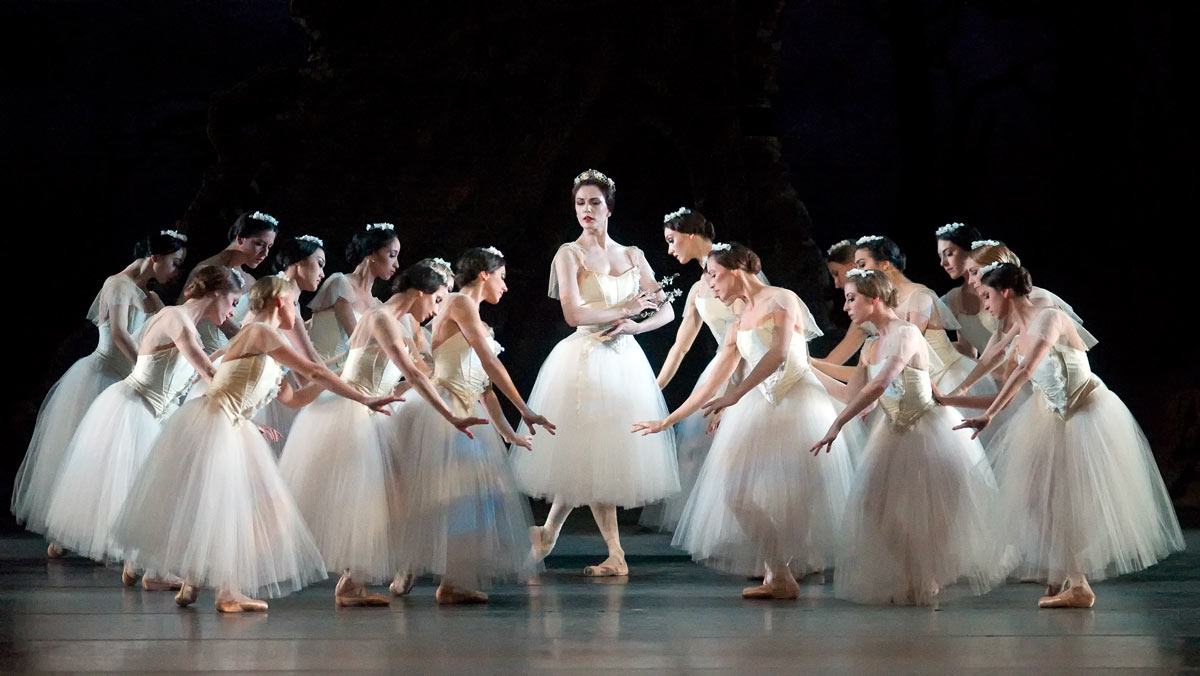
© Gene Schiavone. (Click image for larger version)
Veronika Part’s Myrtha is authoritative and grand. She has also mastered the art of stillness: often, as she stood in the soft light, she looked like a statue or a lithograph, her beautiful face displaying the dispassionate blankness of stone. Her deputies, Moyna and Zulma, were convincingly embodied by two promising younger dancers, Christine Shevchenko, a soloist, and Stephanie Williams, in the corps. Misty Copeland looked relaxed and expansive in the peasant pas de deux; her turns in atittude to one knee were particularly noteworthy. And the assembled wilis moved with beautiful, whispering coordination, a unified body animated by one brain, one breath.
The response to the performance was understandably enthusiastic. Shklyarov, too, seemed caught up in the euphoria, kneeling to his partner repeatedly during the bows, to her mild embarrassment. Abrera, an almost twenty-year veteran of the company and a consistently elegant, understated and perhaps undervalued presence in a wide swath of repertory – everything from Twyla Tharp’s Bach Partita to the adorable Katia in Frederick Ashton’s Month in the Country – has many fans. She’s not a dancer who shines brightly; hers is more of a soft glow. But there’s a place for this, too.












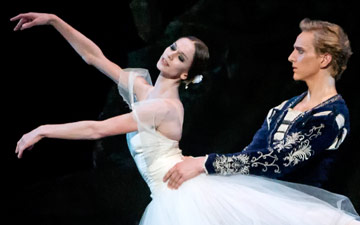

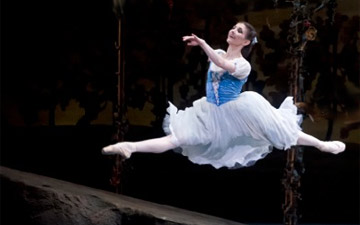
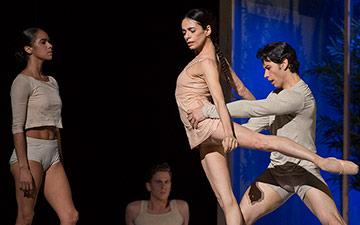
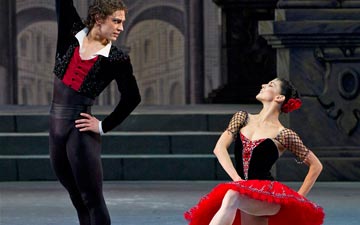
“There were excellent performances all around. Thomas Forster, as the jilted Hilarion, was ardent and confused rather than thuggish, an interpretation that makes him a far more interesting and tragic character.”
There are a couple of Hilarions at Pacific Northwest Ballet that take this direction as well, and it is so intriguing. I know that traditionally the character is supposed to be more dense, but this approach opens other possibilities.